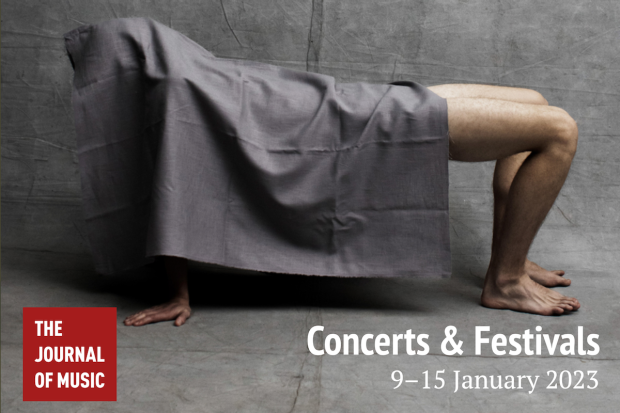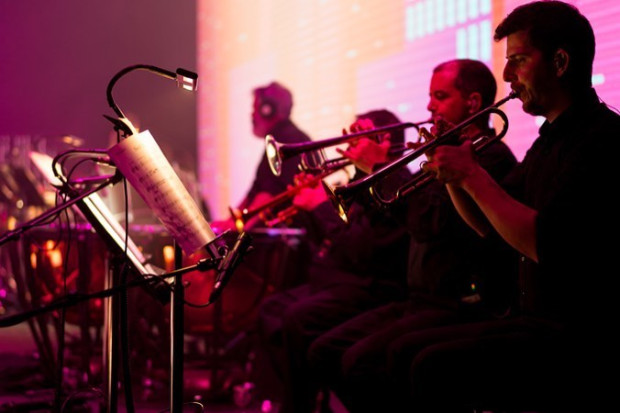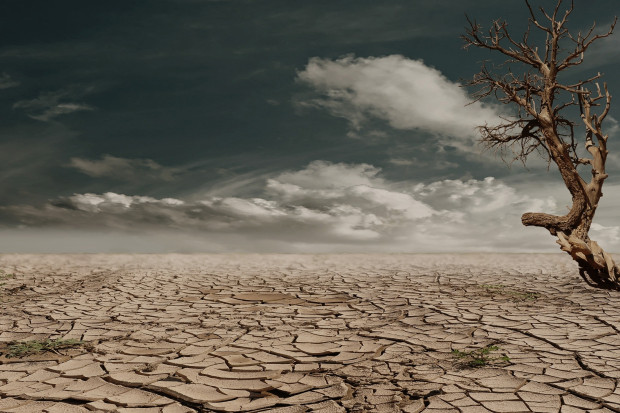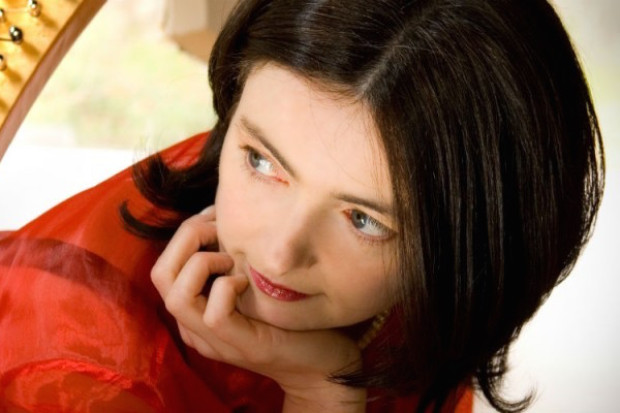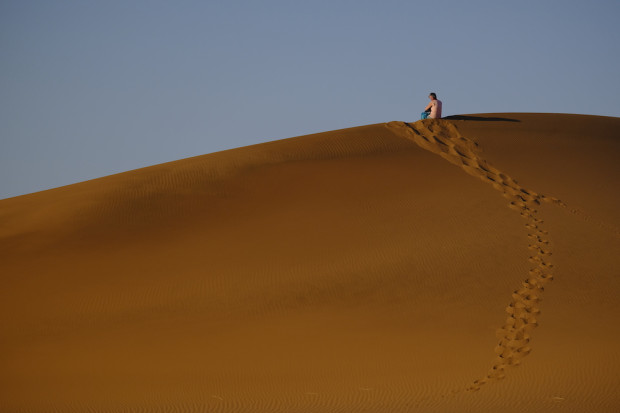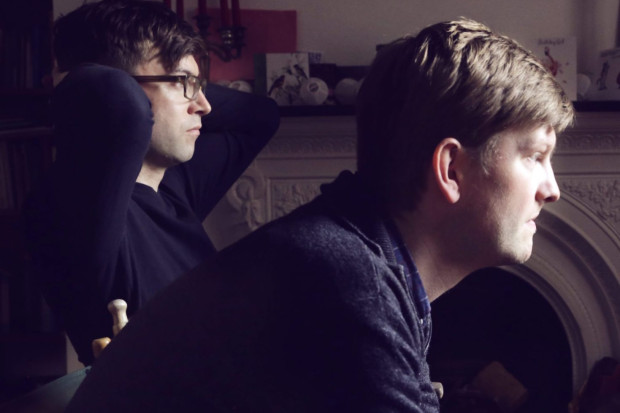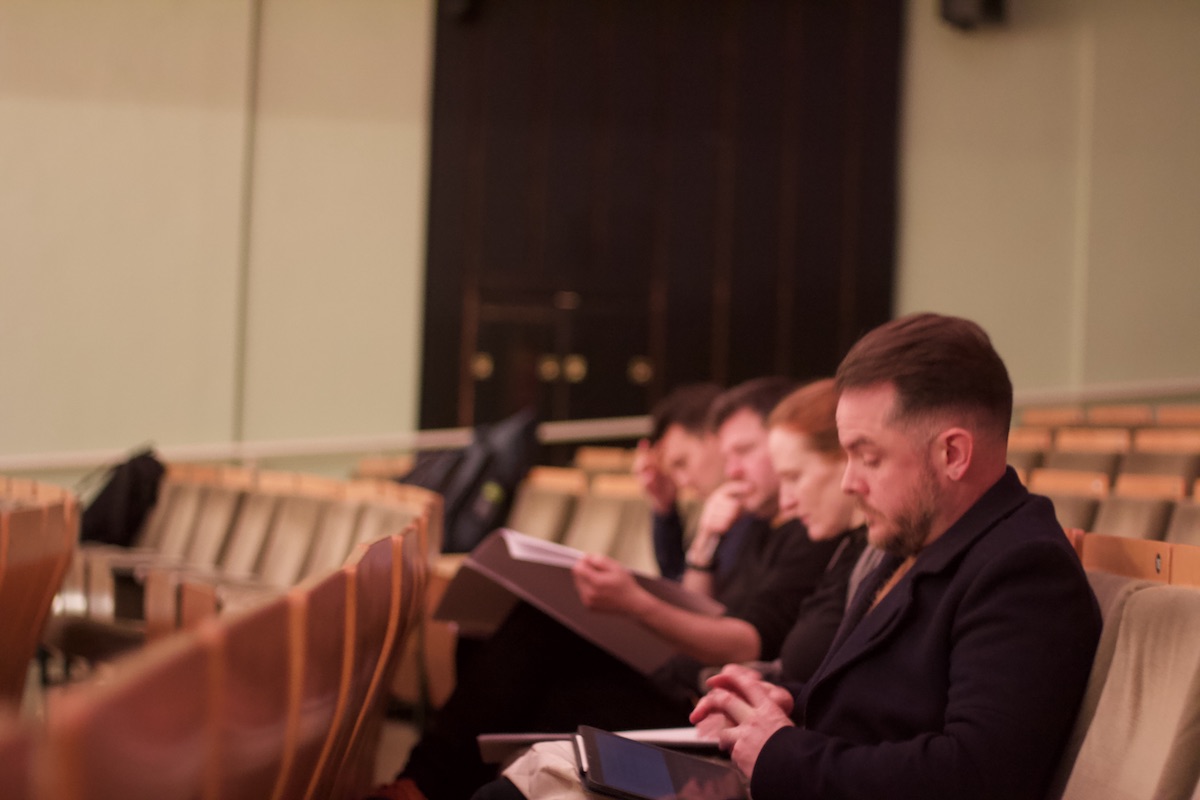
From left to right: composers Adam McCartney, David Fennessy, Judith Ring and Seán O’Dálaigh – participants in Composer Lab. (Photo: Keith Fennell)
The Gradual Unfolding of Ideas
Last week was a significant week for new Irish orchestral music with the National Symphony Orchestra performing four world premieres over the course of two concerts. On Monday 16 January, three new works by Adam McCartney, Seán O’Dálaigh and Judith Ring were performed in a ‘Composer Lab’ concert under the direction of Gavin Maloney. Then, on Friday, as part of the NSO’s main season, the orchestra performed Karen Power’s new work for orchestra and tape entitled …Nature Calls… under the baton of guest conductor Jessica Cottis.
Composer Lab is a professional development initiative run between the NSO and the Contemporary Music Centre in which composers who have had limited experience in writing for orchestra are mentored by a more experienced composer over the course of several months as their work takes shape. For the last few years the role of mentor has been carried out by the Irish composer David Fennessy who teaches at the Royal Conservatoire of Scotland in Glasgow.
Meditation
The first piece in the concert was McCartney’s marana whose Irish-language title approximates the idea of meditation, something that the composer regularly practised during lockdown. This inspiration was very much in evidence as a large part of the piece consisted of a meditation on two ideas that were heard at the outset: a simple three-chord progression on strings over a static bass line and a more elegiac passage of string writing against a backdrop of sustained, mildly dissonant sonorities on the woodwinds and bowed percussion. These two simple ideas were developed on each successive appearance generating an affecting range of emotions from the nostalgic to the melancholic. The most prominent variation included a sharp staccato brass chord that recurred repeatedly and seemed to pierce through the gentle texture. Towards the end of the work the separation between the two ideas became less clear and new material began to appear, including a fanfare-sounding passage on brass that concluded the piece rather abruptly just as it seemed to be getting going.
A meditative aspect was also in evidence in Seán O’Dálaigh’s Ich ruf zu dir, based on the Bach organ prelude of the same name. In his introduction to the piece, the composer described the final result ‘as if you were hearing this piece [the Bach Prelude] being transmitted over a broken radio’. The approach consisted of a deconstruction of the original prelude whose distinctive harmonies were clearly audible at the beginning of the piece. While this might sound like a rather dated postmodern technique, O’Dálaigh did manage to come up with some interesting textures, which, towards the end, included the introduction of radios whose volume knobs were turned up and down by the percussionists. As with McCartney’s work, however, the piece felt as if it had much further to go and this sort of deconstructive treatment generally requires a longer duration.
Plant life
For me, the pick of the works on the night was Judith Ring’s Everything was asleep as if the universe was a vast mistake, which the composer described as conjuring up an image of ‘an apocalyptic scenario where the humans have wiped themselves out and the plant life and nature is taking over and reclaiming the earth’. One of the reasons why it was the most convincing was that it seemed to deal with the short duration more effectively, packing in a good range of highly charged material into a compact timeframe. Setting out from an initial string unison, the texture soon becomes entangled with itself through glissandi and swirling figures from the woodwind, brass and percussion. After thinning back momentarily to just the strings, a new pulsing section began that threw in the kitchen sink and culminated in a very effective climax with fanfare-like brass writing, trombone glissandi and boisterous percussion. After dissipating, another climax using similar material appeared to get going only to falter twice at the point when it seemed to gather momentum. The piece concluded with an elegiac coda with simple scalic figures, mostly on woodwinds, winding their way upwards against a glistening backdrop of sustained strings and percussion in what was presumably meant as a sonic image of plant life reclaiming lost territory.
Inspired by the Irish countryside
Karen Power’s …Nature Calls… managed to generate a rich and fascinating soundworld through its blending of pre-recorded soundscapes of the Irish countryside (in particular, the song of the native Irish blackbird) and the orchestra. It began mysteriously with the violins and viola players blowing into the sound holes of their instruments creating a collective breath that then transitioned into shimmering tremolandi undergirded by deep notes in the double basses and bassoon. These nature sounds were expertly blended with chirping interjections from the woodwinds and brass, string trills and percussion to create a texture that gradually thickened until what sounded like a flock of birds seemed to pass overhead around the two-minute mark.
When the texture thinned out again, the piece moved to a new section with it now being the turn of the brass and woodwind players to blow tonelessly into their instruments. The defining feature of this part was an organ-like sonority that advanced and receded from deep against a background of microtonal strings. This sonority alternately appeared to brighten and darken in what seemed like an idea that had plenty of latent potential. Again, however, the piece ended somewhat abruptly, right at the point where it seemed to be getting into its groove.
Commissioning
The fact that three of the four pieces seemed to end prematurely does raise the issue of writing appropriately for the length for which one is commissioned. In practice, durations of 6–8 minutes are only suitable for a blustery work of the overture type or a brief, lightweight adagio. However, the main thrust of much contemporary music – as evinced here by the works of McCartney, O’Dálaigh and Power – is preoccupied with the gradual unfolding of ideas as well as timbral concerns and is therefore orientated towards much longer lengths. Commissioning bodies may need to take heed of this in order to provide the most productive conditions for composers when the rare opportunity to write an orchestral work arises.
The other works on the programme in the Friday night concert included Dvořák’s violin concerto with soloist Leticia Moreno and Beethoven’s Symphony No. 7. Moreno’s performance managed to keep the tension of this episodic work together even if some of the technically difficult sections of passagework and double stopping were not always executed with a corresponding flair and clarity. In the second half, the NSO gave a blisteringly high-octane performance of the Beethoven that brought the concert to a satisfactory conclusion.
Although four world premieres in the space of a week sounds like not bad going, the contemporary music issue is still a pressing one for the NSO whose output has not significantly increased with the move to the NCH. As for the CMC’s Composer Lab initiative it would be interesting to see if some of the more promising pieces that feature in this project could be expanded into works of a more substantial length that could then be featured in the main season where, ultimately, the music of living composers belongs.
Listen back to last Friday’s concert here. For upcoming National Symphony Orchestra concerts, visit www.nch.ie.
Subscribe to our newsletter.
Published on 26 January 2023
Adrian Smith is Lecturer in Musicology at TU Dublin Conservatoire.












